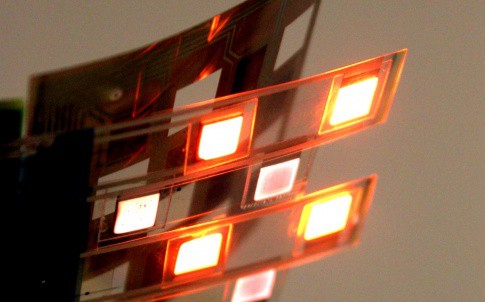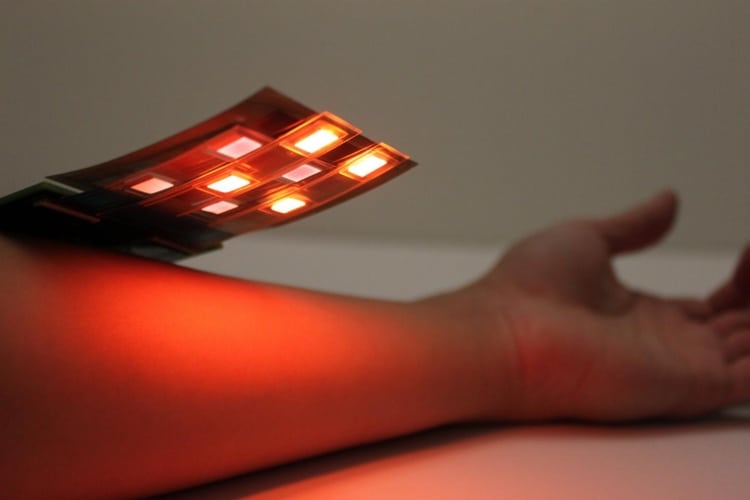
Oximeters use light to detect the ratio of oxygen-rich red blood to darker, less oxygenated blood. Until now, this has only worked on areas of the body that are partially transparent, like the fingertips or the earlobes. Using flexible electronics combined with a new way of measuring oxygenation with reflected light rather than transmitted light, the UC Berkeley team can now measure oxygen levels anywhere in the body. The research could lead to improved wound monitoring and more accurate assessment of transplant patients.
"All medical applications that use oxygen monitoring could benefit from a wearable sensor," said Ana Claudia Arias, a professor of electrical engineering and computer sciences at UC Berkeley. "Patients with diabetes, respiration diseases and even sleep apnoea could use a sensor that could be worn anywhere to monitor blood-oxygen levels 24/7."
Described in the journal Proceedings of the National Academy of Sciences, the oximeter is made of organic electronics printed on bendable plastic that moulds to the body’s contours. Arias and her team had previously shown that printed organic LEDs could be used to create thin, flexible oximeters for fingertips or earlobes. Since then, they have developed a new method known as reflection-mode pulse oximetry, whereby LEDs and photodiodes (PDs) operate at red and near-infrared (NIR) wavelengths as part of the same array. This allows blood-oxygen readings to be taken on any part of the body.

The team used the sensor to track the overall blood-oxygen levels on the forehead of a volunteer who breathed air with progressively lower concentrations of oxygen - similar to ascending in altitude - and found that it matched those using a standard fingertip oximeter. They also used the sensor to map blood-oxygen levels in a three-by-three grid on the forearm of a volunteer wearing a pressure cuff.
"After transplantation, surgeons want to measure that all parts of an organ are getting oxygen," said Yasser Khan, a graduate student in electrical engineering and computer sciences at UC Berkeley. "If you have one sensor, you have to move it around to measure oxygenation at different locations. With an array, you can know right away if there is a point that is not healing properly."




April 1886: the Brunkebergs tunnel
First ever example of a ground source heat pump?